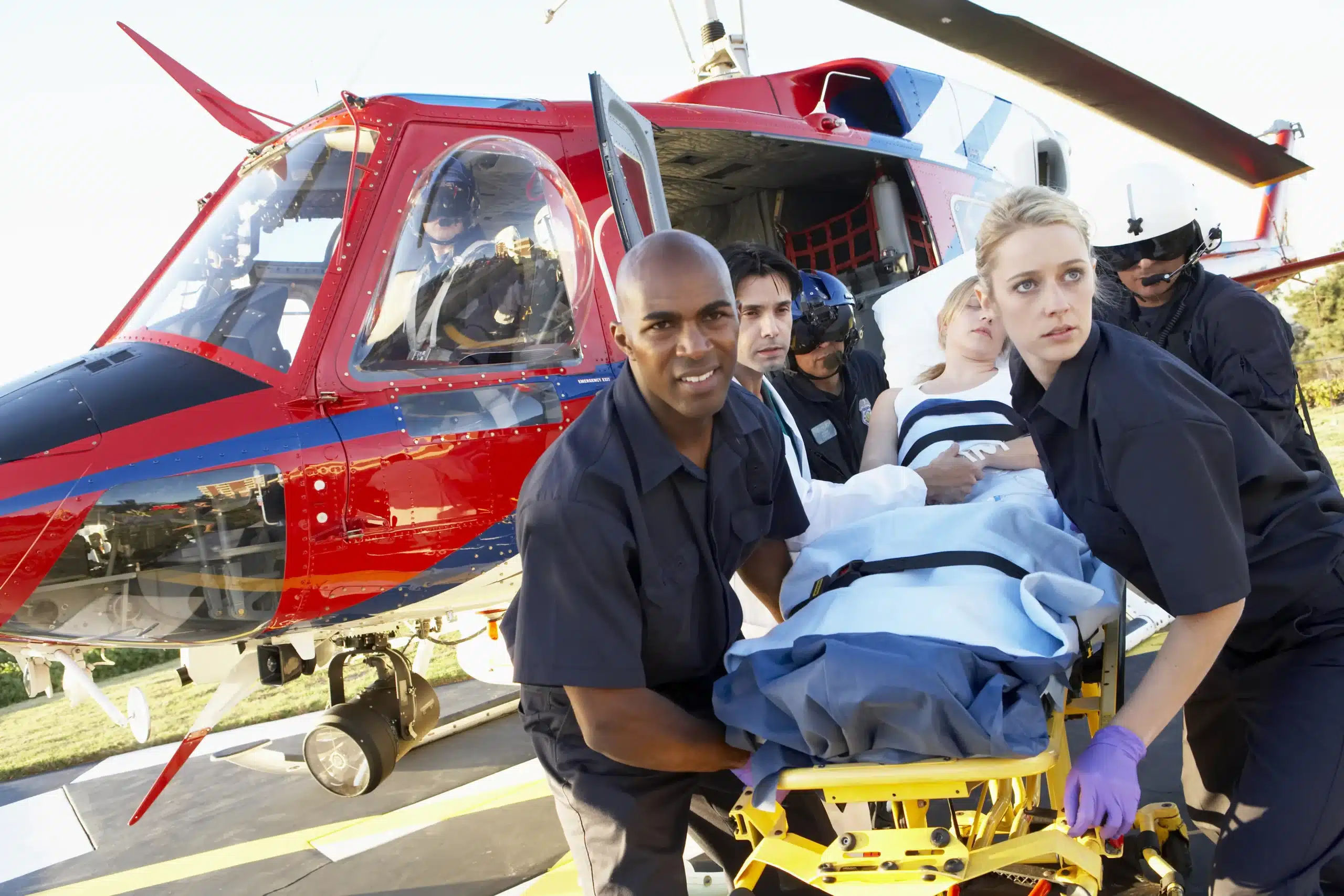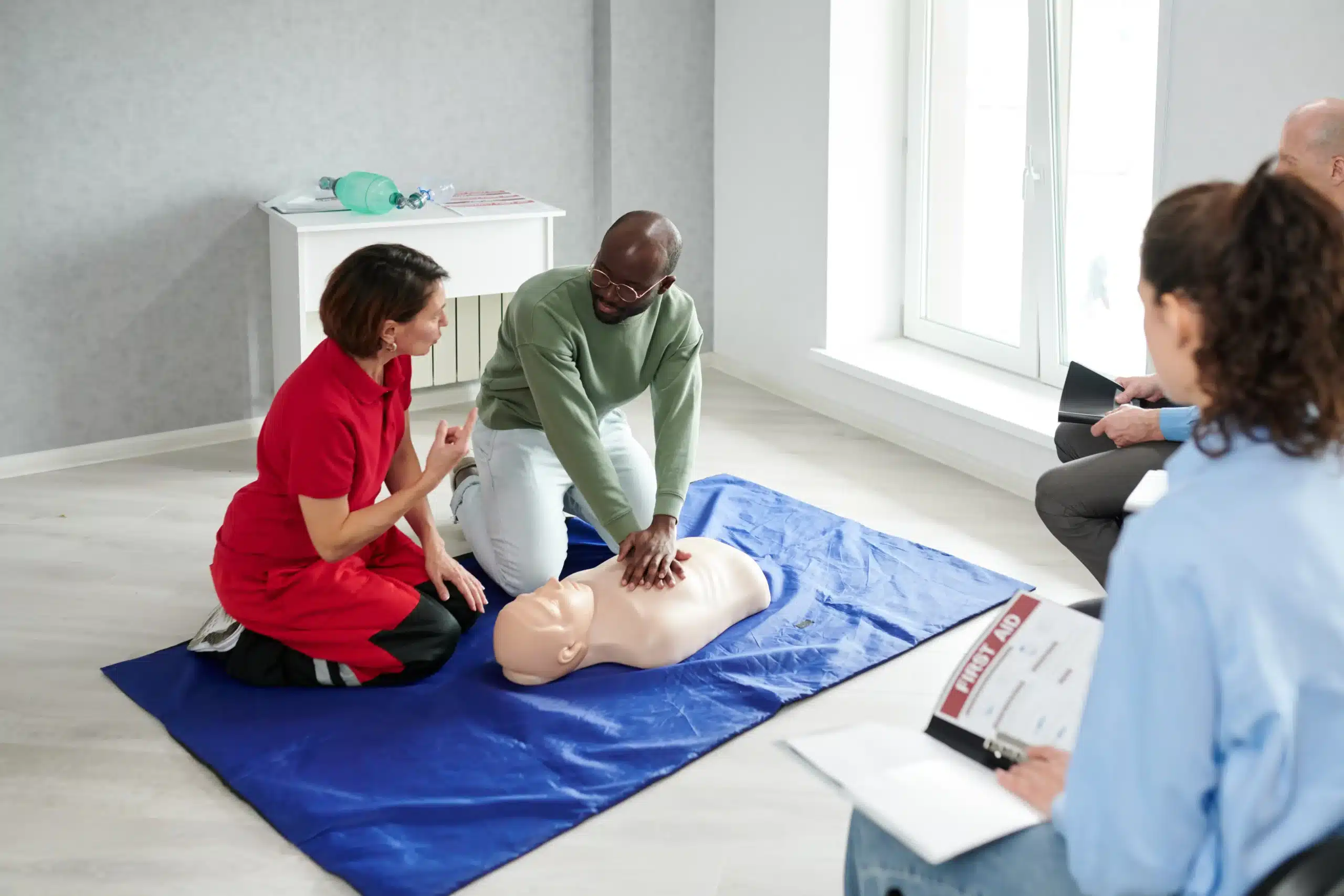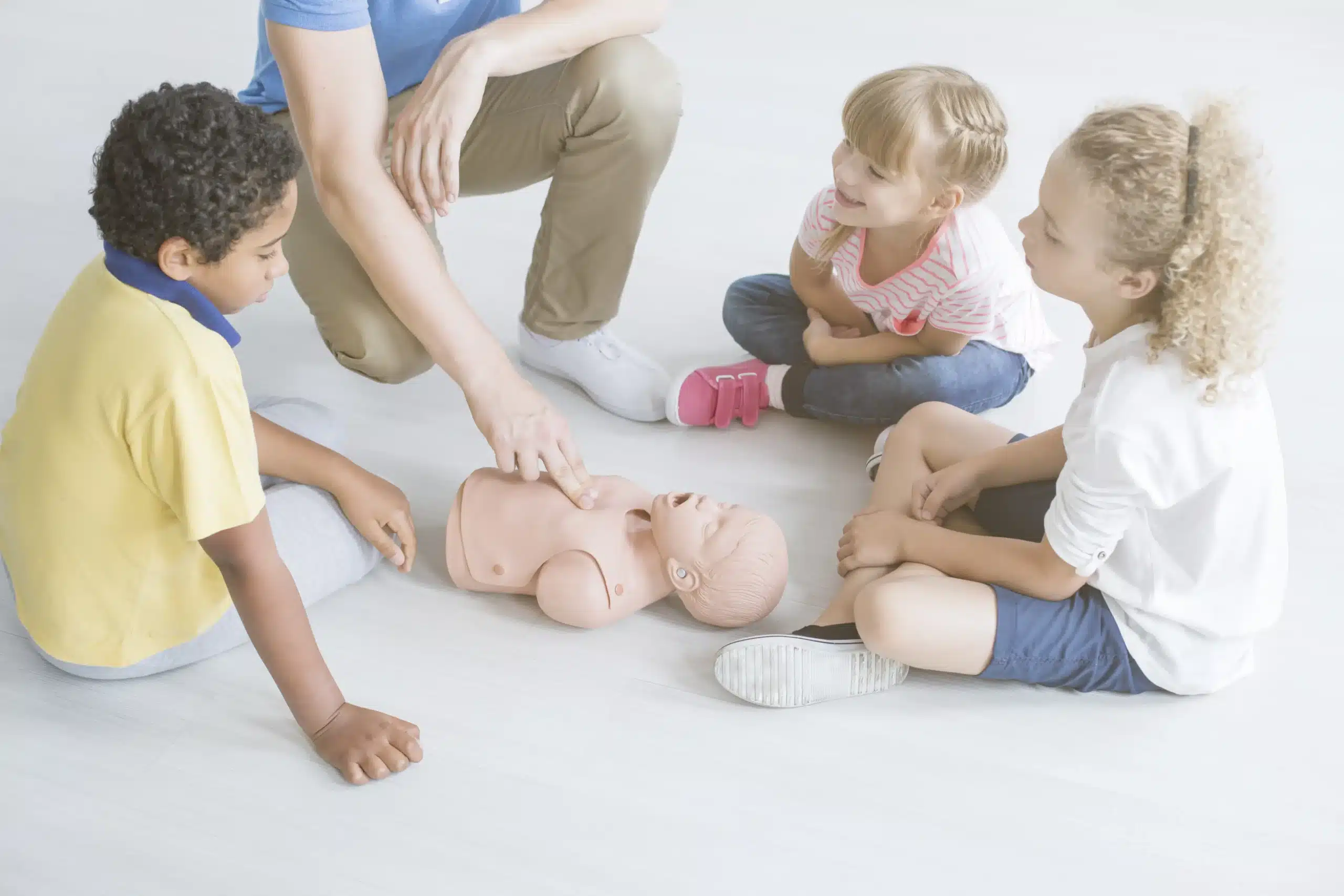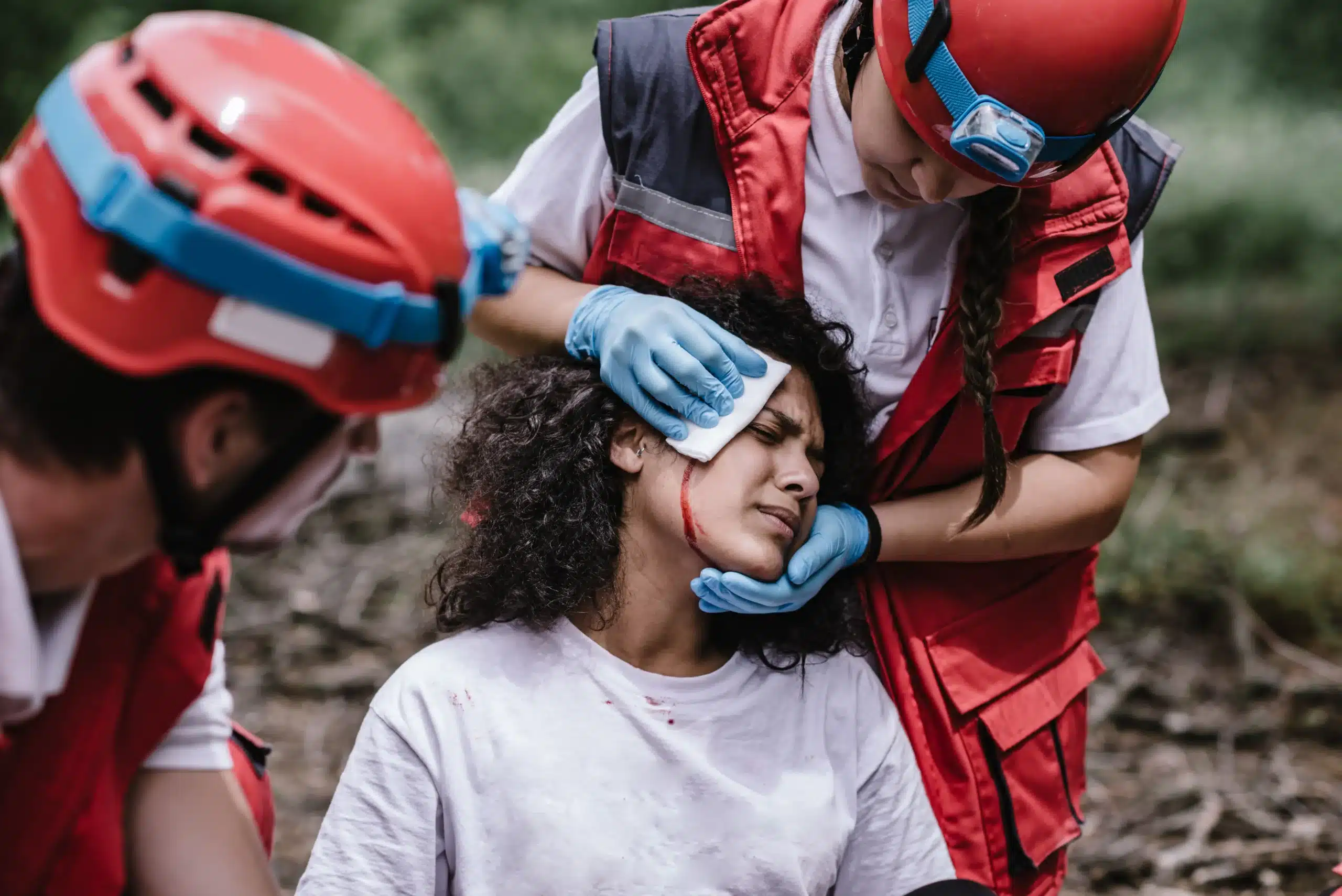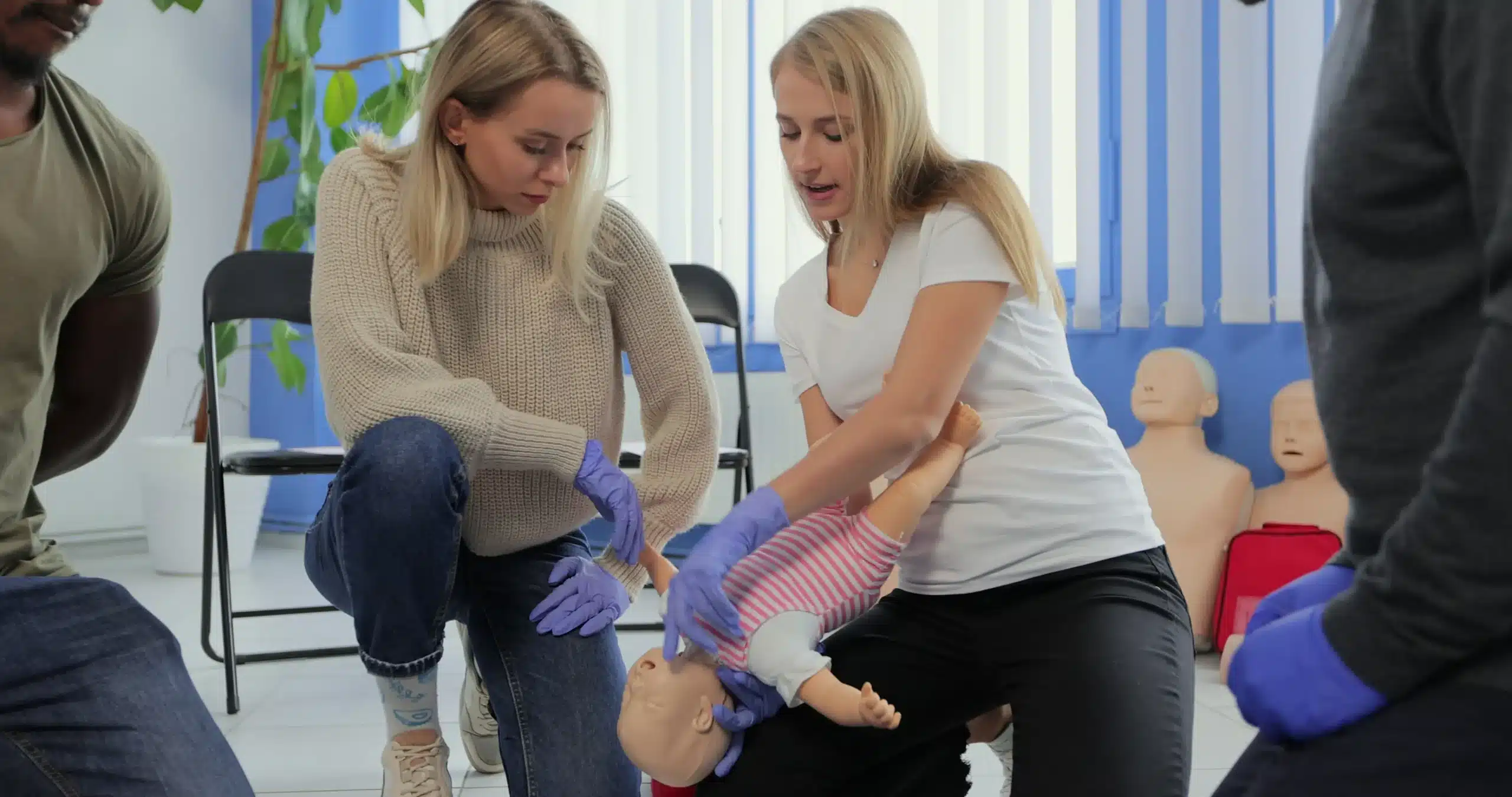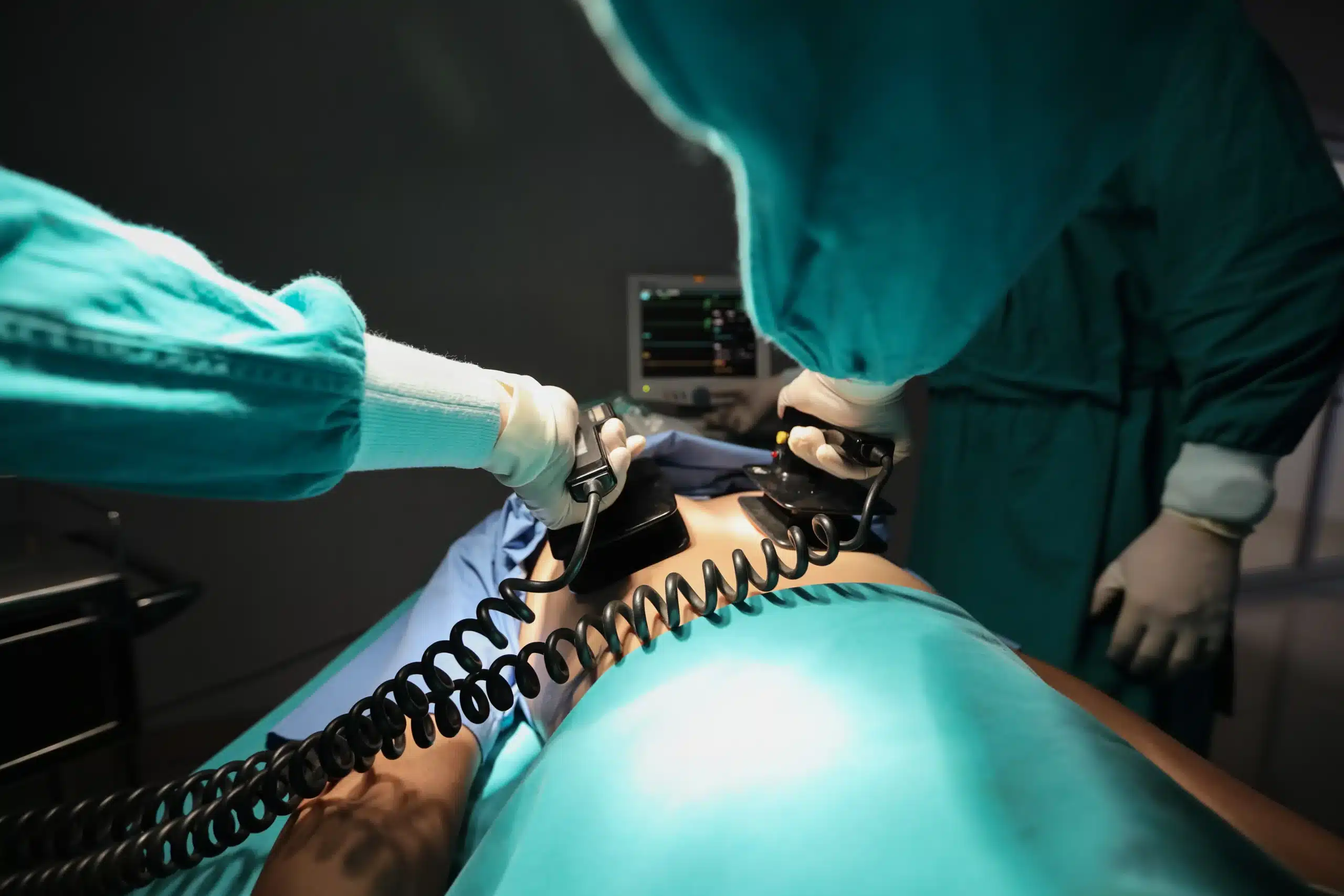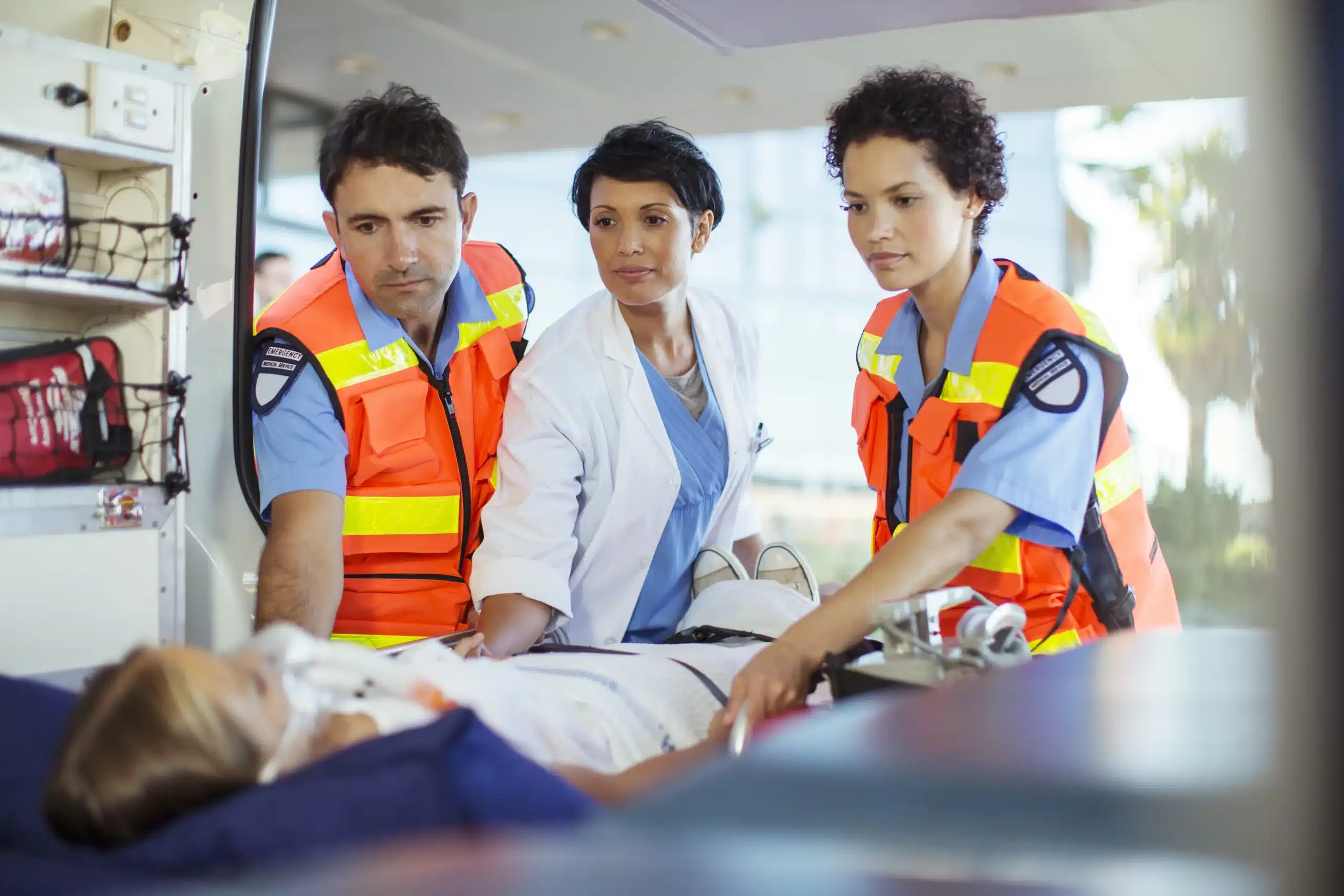In a world where the unexpected can happen at any moment, having first-aid skills is more than just helpful—it’s essential. Knowing how to respond to medical emergencies can bring peace of mind to you, your family, and your community. If you’ve been typing “first-aid classes near me” into your search bar, you’re taking the first step towards becoming a more prepared and confident individual. This guide will walk you through the process of finding the right first-aid training, from understanding the different types of courses available to evaluating potential instructors. We’ll also discuss the benefits of certification and how to keep your skills sharp.
Key Takeaways
- First-aid skills empower you in emergencies: Learn to treat minor injuries and respond to serious medical situations until professional help arrives. Find a course that fits your needs, whether it’s general first-aid, CPR/AED training, or a specialized course.
- Select the right course for your learning style: Consider your needs, preferred learning format (online or in-person), and the training provider’s reputation. Look for certified instructors, check reviews, and compare costs.
- Stay sharp with regular practice: Refresh your knowledge and skills periodically to maintain confidence and provide effective care in emergencies. Consider recertification or refresher courses to stay current.
What Are First-Aid Classes?
First-aid classes teach you how to respond to common medical emergencies. From minor cuts and burns to more serious situations like choking or sudden cardiac arrest, these classes give you the skills to provide immediate care until professional help arrives. Learning first-aid can make a real difference in someone’s life—it could even save it. If you’re looking for first-aid classes nearby, this guide will help you understand what to expect and how to find the right class for you. We’ll cover everything from the types of courses available to the benefits of getting trained.
Common First-Aid Class Types
First-aid classes aren’t one-size-fits-all. They come in different formats designed for various needs and skill levels. You can find general first-aid courses covering a broad range of emergencies or specialized classes focusing on specific areas like CPR and first-aid for parents or workplace first-aid training. Some courses combine first-aid with CPR and AED training, providing comprehensive emergency preparedness. Whether you need basic lifesaving skills for your family or advanced training for your profession, there’s a course out there for you. At Safety Training Seminars, we offer a variety of American Heart Association courses including CPR and first-aid, to meet your specific needs.
Essential First-Aid Skills
First-aid classes equip you with practical skills to handle a variety of medical situations. You’ll learn how to assess a scene for safety, recognize the signs of different emergencies, and provide appropriate care. This includes skills like controlling bleeding, managing burns, treating sprains, and performing CPR. First-aid training empowers you to respond confidently and effectively in emergencies, providing critical support until professional medical personnel take over. Our classes at Safety Training Seminars emphasize hands-on practice to build your confidence and competence.
Benefits of First-Aid Training
The advantages of first-aid training go beyond simply knowing what to do in a crisis. It fosters a sense of preparedness and empowers you to take action, potentially saving lives. Studies show that workplace first-aid training can reduce accidents and create a safer environment. Plus, having these skills can boost your confidence and reduce anxiety in emergency situations. Knowing you can make a difference provides peace of mind for you, your family, and your community. Consider our discount group classes at Safety Training Seminars for an affordable way to get certified with friends, family, or colleagues.
Find Reputable First-Aid Training
Finding the right first-aid training provider is key to learning life-saving techniques. Do your research to ensure you’re getting accurate and up-to-date information from qualified instructors. This is especially important since your certification will be valid for two years, so you want to make sure you learn from a reputable source.
Research Local Options
Start by searching online for “first-aid classes near me.” Look for providers in your area offering certifications recognized by established organizations like the American Heart Association or the American Red Cross. Consider factors like class schedules, location, and course content to find a good fit. Safety Training Seminars, for example, offers a range of American Heart Association courses in Livermore, CA, serving Dublin, Livermore, and Mountain House. We also offer an innovative RQI program for quick certification and discount group classes.
Evaluate Instructors
Qualified instructors are essential for effective first-aid training. Look for instructors certified by reputable organizations with demonstrable experience in emergency response. Check the provider’s website or contact them to inquire about instructor credentials. For instance, Safety Training Seminars prioritizes excellent customer service and maintains competitive pricing, ensuring high-quality training remains accessible. This due diligence will give you confidence in the training you receive.
Check Reviews & Testimonials
Reading reviews and testimonials from past students gives you valuable insights into a training provider’s reputation. Look for comments about the instruction quality, course materials, and overall learning experience. Sites like Yelp, Google Reviews, and even social media pages can be helpful resources. These firsthand accounts can help you decide if a particular provider is a good fit.
Top First-Aid Training Providers
Several well-known organizations offer high-quality first-aid training programs:
American Red Cross
The American Red Cross offers various first-aid and CPR courses, including online, blended, and in-person options. They are a trusted name in emergency preparedness and response.
American Heart Association
The American Heart Association provides comprehensive first-aid training programs focusing on evidence-based techniques. Many local training centers offer AHA-aligned courses.
National Safety Council
The National Safety Council offers various first-aid courses designed for various settings, including workplaces and community groups.
St. John Ambulance
St. John Ambulance is a leading international first-aid training provider, particularly prominent in the UK, with a wide array of courses. They are known for their comprehensive and practical approach to first-aid education.
Safety Training Seminars
Safety Training Seminars offers various first aid, CPR, and other safety training courses, often focusing on affordable and accessible options. They emphasize creating a comfortable learning environment for students.
How Much Do First-Aid Classes Cost?
Deciding to get first-aid certified is a great first step. Naturally, you’ll want to know what to expect when it comes to cost. Let’s break down first-aid class pricing and explore some smart ways to save.
Average Course Pricing
First-aid and CPR class costs vary depending on a few things. The specific type of course, your location, and whether you choose online or in-person learning all play a role. Basic first-aid and CPR classes typically range from $40 to $60 per person. More specialized training, like wilderness first aid or pediatric first aid, might have a higher price tag. Check with various training providers in your area to compare pricing and find the best fit for your budget. Safety Training Seminars offers competitive pricing on all courses, and we even have a low price guarantee.
Discounts & Free Resources
Looking to save on your first-aid training? Keep an eye out for discounts! Many organizations, including the American Red Cross, sometimes offer promotions on their training courses and materials. You might find deals on their websites or through local community centers. Also, check if your employer offers any reimbursement programs for first-aid training. While free courses are less common, some community organizations or health departments may offer free or low-cost options, so it’s always worth exploring. For larger groups, Safety Training Seminars offers discount group classes to make training more accessible.
Why First-Aid Training is Worthwhile
While cost is a factor, think of first-aid training as an investment. Knowing how to respond to emergencies can make a real difference. First-aid training empowers you to act quickly and confidently in situations ranging from minor injuries to life-threatening events. It also increases your awareness of potential hazards, making you more safety-conscious in everyday life. Whether for personal enrichment or professional requirements, the benefits of first-aid training far outweigh the cost. At Safety Training Seminars, your certification card is valid for two years, giving you long-lasting value.
What Happens in a First-Aid Class?
Knowing what to expect can help you feel prepared and confident going into your first-aid training. Here’s a glimpse at what generally takes place:
Course Format & Duration
First-aid courses accommodate a variety of learning styles and schedules. You can find classes online, in person, or in blended formats that combine both. In-person classes offer a more interactive experience, allowing for real-time feedback from instructors and practice with other students. Online courses provide flexibility, letting you learn at your own pace. A blended learning approach often starts with online instruction and then moves to an in-person session for hands-on skills practice. Depending on the course type and provider, first-aid classes can range from a few hours to a full day.
Certification Process
First-aid certification demonstrates that you’ve completed a recognized training program and possess the necessary skills. Reputable providers, like the American Red Cross or National Safety Council, adhere to specific standards to ensure quality and consistency. After successfully completing the course requirements, including written and practical assessments, you’ll receive your certification card. These certifications are typically valid for two years, after which you’ll need a refresher course to stay current. Always verify that your chosen provider meets certification standards before enrolling.
Hands-on Practice & Assessment
A significant portion of first-aid training involves hands-on practice. You’ll learn essential skills like CPR, wound care, and how to respond to various medical emergencies. Instructors guide you through demonstrations and provide opportunities to practice these techniques in a safe environment. This practical experience builds your confidence and prepares you to react effectively in real-life situations. Assessment typically includes demonstrating these skills and passing a written exam to confirm your understanding of the material. Look for training providers that emphasize hands-on learning for the most effective training experience.
Choose the Right First-Aid Class
So, you’ve decided to get your first-aid certification—great! Now, how do you pick the right course for you? Let’s break down how to find the perfect fit.
Assess Your Needs
Before browsing courses, think about why you want first-aid training. Are you required to have it for your job (childcare providers, healthcare workers, or coaches, for example)? Do you want to feel more prepared for emergencies at home? Or maybe you’re headed out on a wilderness adventure and want to brush up on your skills. Knowing your “why” will help you choose the right level of training. As the experts at HASpod point out, the right training gives you the knowledge and skills to handle a medical emergency.
Online vs. In-Person Training
Next, consider your learning style. Do you thrive in a classroom with face-to-face interaction? Or do you prefer the flexibility of online learning? Both options have their advantages. In-person classes offer hands-on practice and direct feedback from instructors. Online courses allow you to learn at your own pace and fit the training around your busy schedule. Some providers even offer blended learning, combining online modules with in-person skills sessions. The American Red Cross offers a variety of learning formats.
Specialized First-Aid Training
Depending on your needs, you might want to consider specialized first-aid training. For example, if you work with children, a pediatric first-aid course, like the one offered by Safety 1st Seminars, would be beneficial. Other specialized courses focus on wilderness first aid, CPR/AED training, or basic life support. At Safety Training Seminars, we offer a range of American Heart Association courses including BLS, ACLS, PALS, and CPR/First-Aid. We also offer the innovative RQI program for quick and convenient certification. For those working in childcare, we offer the EMSA Child Care Health & Safety training. Don’t forget to check out our discount group classes for added value.
Maintain Your Skills
First-aid certification isn’t a one-and-done deal. It’s important to keep your skills fresh. Regularly practicing and reviewing the material will help you stay prepared for real-life emergencies. Plus, refreshing your training can boost your confidence in providing care. USCPR Online highlights how first-aid training empowers employees to handle emergencies effectively. Consider recertifying before your current certification expires—ours are valid for two years—or take a refresher course to stay sharp. Check out our low price guarantee for affordable options.
Related Articles
- First-Aid Training Classes in Livermore – Livermore CPR Classes
- First Aid Training in Dublin: A Practical Guide – Livermore CPR Classes
- CPR & First Aid Training in Dublin: A Complete Guide – Livermore CPR Classes
- First-Aid in Mountain House: Essential Tips & Resources – Livermore CPR Classes
- Pediatric CPR & First-Aid Training in Dublin – Livermore CPR Classes
Frequently Asked Questions
How long is a typical first-aid certification valid for? Most first-aid certifications, including those from Safety Training Seminars, are valid for two years. After that, you’ll need to take a refresher course to renew your certification and stay up-to-date on the latest guidelines.
What’s the difference between online and in-person first-aid classes? Online classes offer flexibility, allowing you to learn at your own pace and on your own schedule. In-person classes provide a more interactive experience with hands-on practice and direct feedback from instructors. Some providers offer blended learning, combining the benefits of both formats.
Are there different types of first-aid classes? Yes, there are various types of first-aid classes catering to different needs. You can find general first-aid courses covering a broad range of emergencies, or specialized courses like pediatric first-aid, wilderness first-aid, or CPR/AED training. Choose the course that aligns with your specific interests or professional requirements.
How can I find first-aid classes near me? A simple online search for “first-aid classes near me” is a great starting point. You can also check with local community centers, hospitals, or organizations like the American Red Cross or American Heart Association to find training providers in your area.
Why should I get first-aid certified? First-aid training equips you with the skills to respond confidently and effectively in medical emergencies. It empowers you to provide immediate care until professional help arrives, potentially saving lives. Beyond the practical skills, first-aid training promotes safety awareness and can give you valuable peace of mind.
